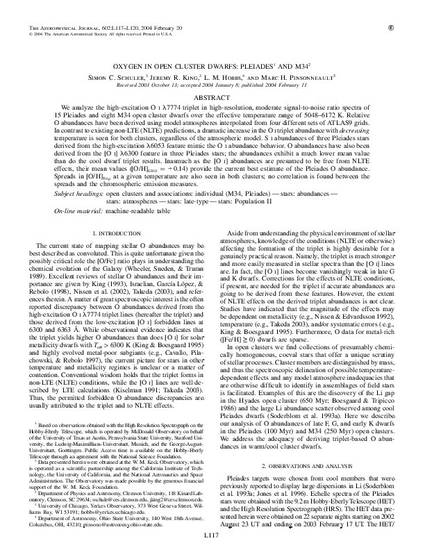
We analyze the high-excitation O I lambda7774 triplet in high-resolution, moderate signal-to-noise ratio spectra of 15 Pleiades and eight M34 open cluster dwarfs over the effective temperature range of 5048-6172 K. Relative O abundances have been derived using model atmospheres interpolated from four different sets of ATLAS9 grids. In contrast to existing non-LTE (NLTE) predictions, a dramatic increase in the O I triplet abundance with decreasing temperature is seen for both clusters, regardless of the atmospheric model. S I abundances of three Pleiades stars derived from the high-excitation lambda6053 feature mimic the O I abundance behavior. O abundances have also been derived from the [O I] lambda6300 feature in three Pleiades stars; the abundances exhibit a much lower mean value than do the cool dwarf triplet results. Inasmuch as the [O I] abundances are presumed to be free from NLTE effects, their mean values ([O/H]6300=+0.14) provide the current best estimate of the Pleiades O abundance. Spreads in [O/H]Trip at a given temperature are also seen in both clusters; no correlation is found between the spreads and the chromospheric emission measures.
